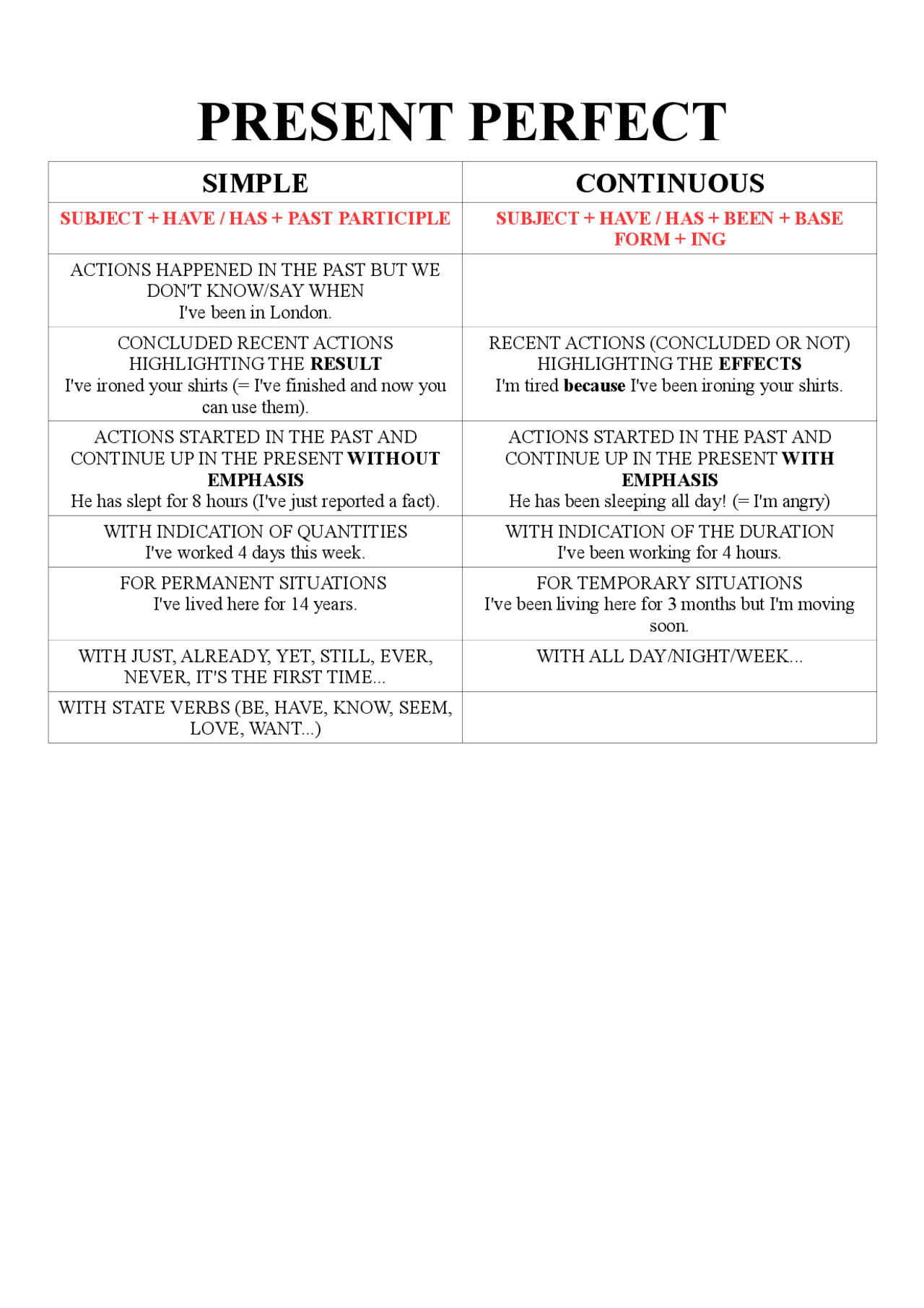
PRESENT PERFECT SIMPLE AND CONTINUOUS Schemi e mappe concettuali di
Past actions with a result in the present. We can use the present perfect to talk about a past action that has a result in the present. He's broken his leg so he can't go on holiday. There's been an accident on the main road, so let's take a different route. They haven't called me, so I don't think they need me today.
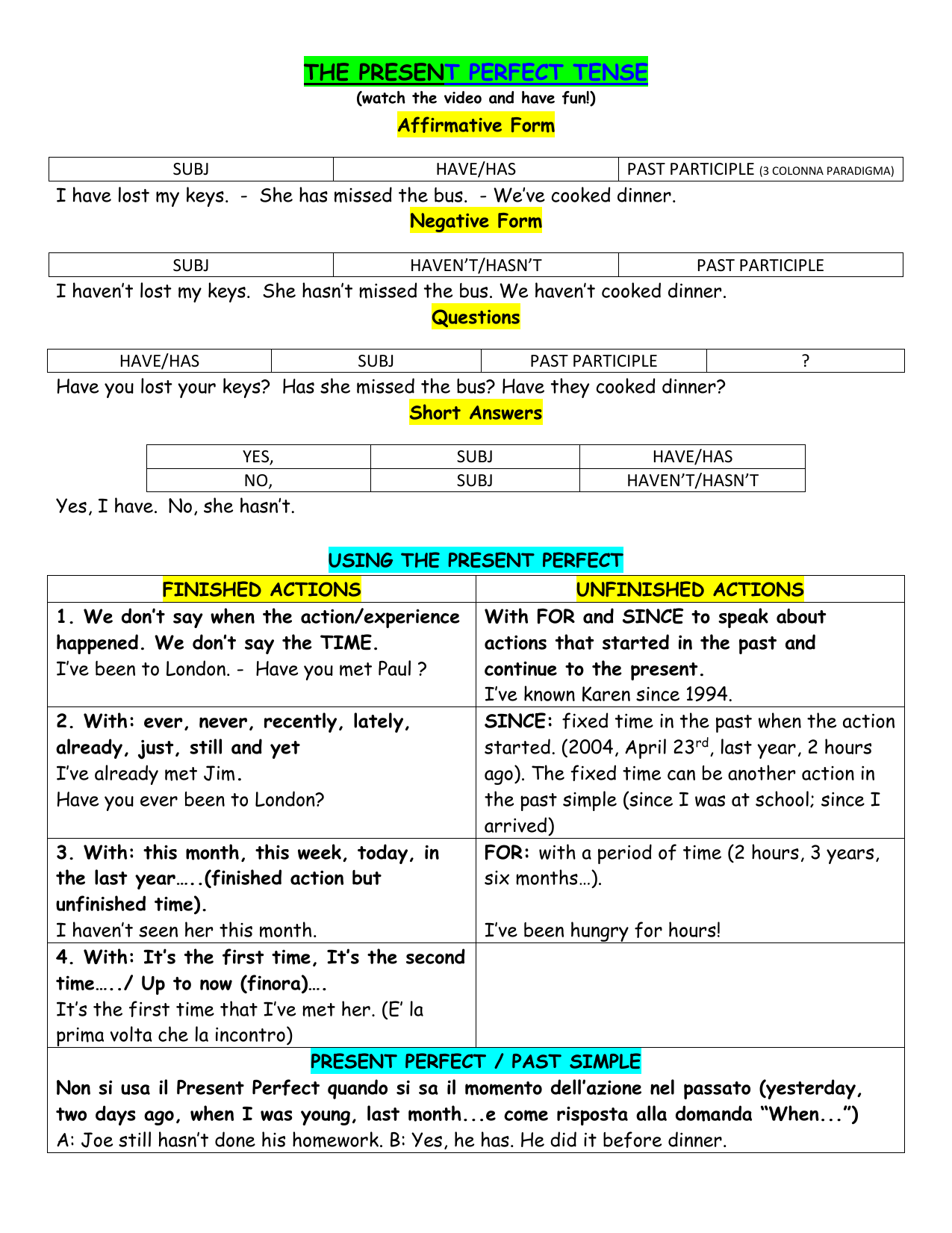
Schema PRESENT PERFECT
The present perfect simple usually focuses on the result of the activity in some way, and the present perfect continuous usually focuses on the activity itself in some way. You've cleaned the bathroom! It looks lovely! I've been gardening. It's so nice out there. She's read ten books this summer.

MAPPE per la SCUOLA PRESENT CONTINUOUS
Reference Present perfect simple: been and gone 'Where's Dad?' 'He's gone to the supermarket.' I've been to the supermarket. Do you want an apple? Andy has been to New York three times. Anna's gone to Santiago. She'll be back on Friday. Has Cathy gone to school today? Have you ever been to Iceland? We form the present perfect simple of go with:

mappa schema tabella dsa futuri inglese will going to present
The tables below show all 12 tenses so you can see the present perfect tense among the other tenses. (You can change the verb by clicking one of the green buttons.) Top 10 Regular Verbs. want look use work start try ask need talk help. Top 10 Irregular Verbs. see say go come know get give become find think. All 4 Past Tenses.

Past Simple vs. Present Perfect English grammar tenses, Learn english
English Grammar Verbs Present tense Present perfect Present perfect Level: beginner The present perfect is formed from the present tense of the verb have and the past participle of a verb. We use the present perfect: for something that started in the past and continues in the present: They've been married for nearly fifty years.
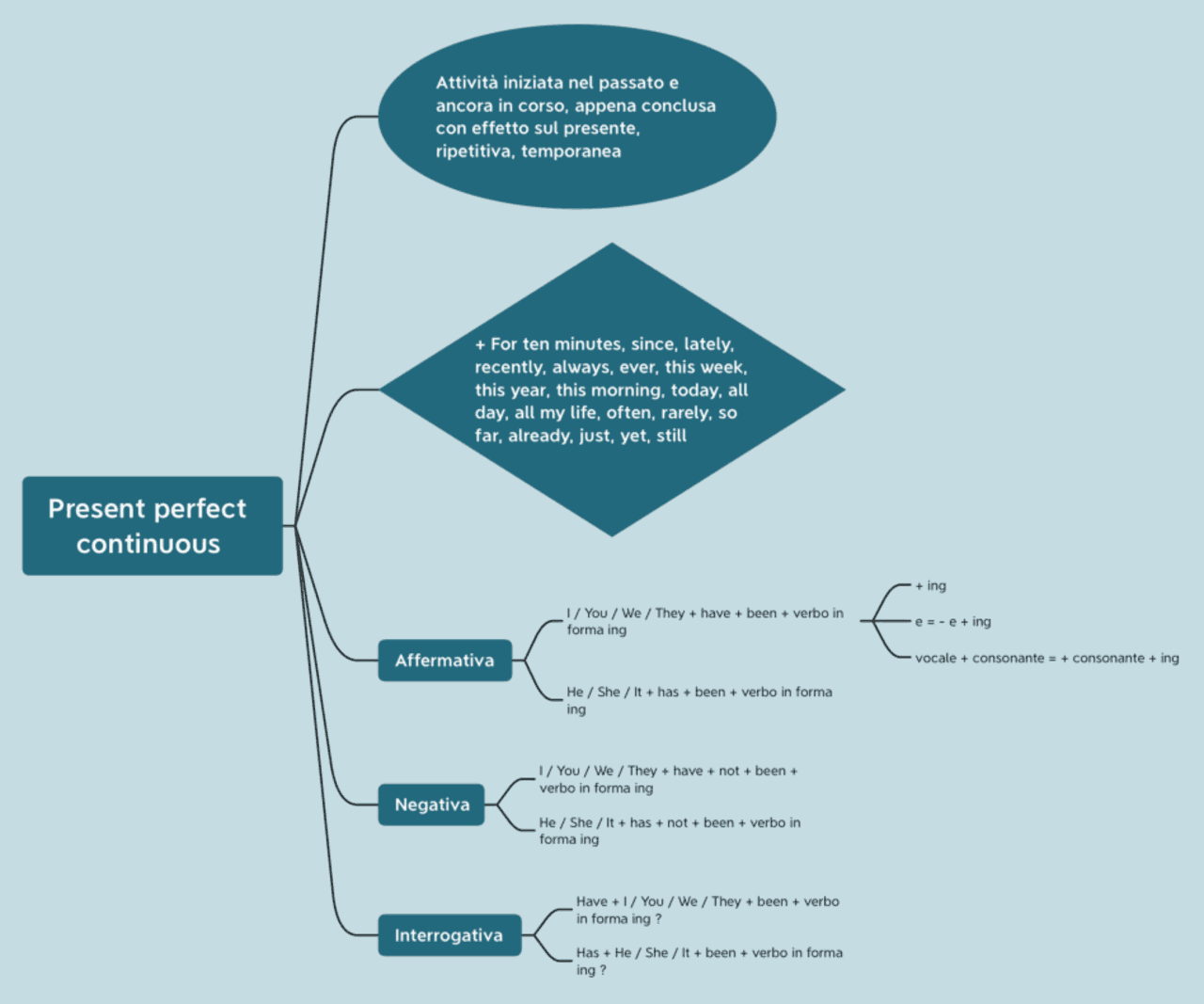
Present perfect continuous Schemi e mappe concettuali di Inglese
To make the positive present perfect tense, use: 'have' / 'has' + the past participle. Make the past participle by adding 'ed' to regular verbs (for example, 'play' becomes 'played') There are a few verbs that change their spelling when you add 'ed' (for example, 'study' becomes 'studied') We also have some completely irregular verbs.
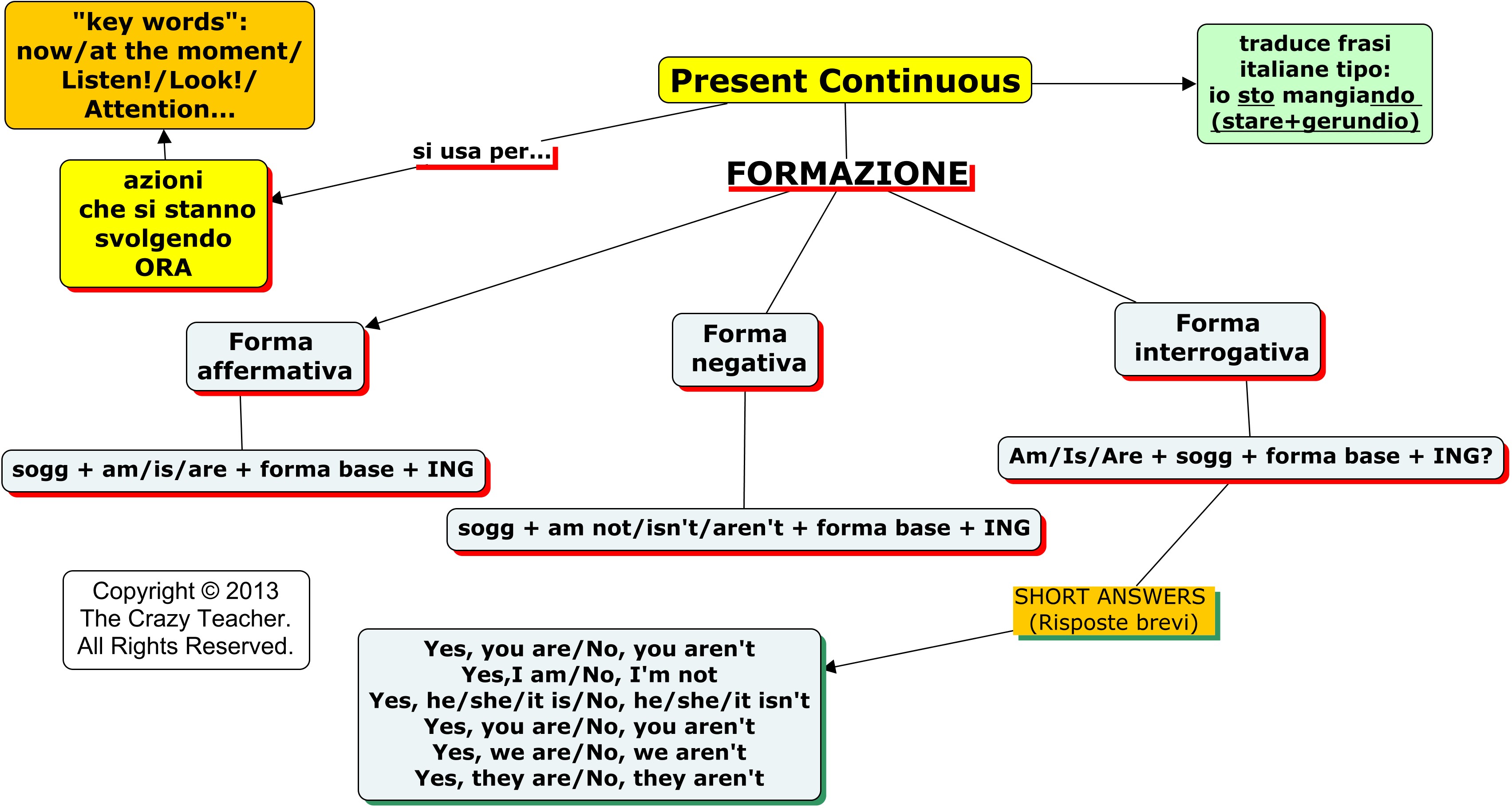
Present Perfect Mappa Concettuale
Explanation. A verb is a word or phrase that is a main part of a sentence and expresses action or a state of being. The present perfect tense connects the past to the present using the present simple of the auxiliary verb 'have' and the past participle of any verb. subject + 'has/have' + past participle of verb ('-ed' or irregular)
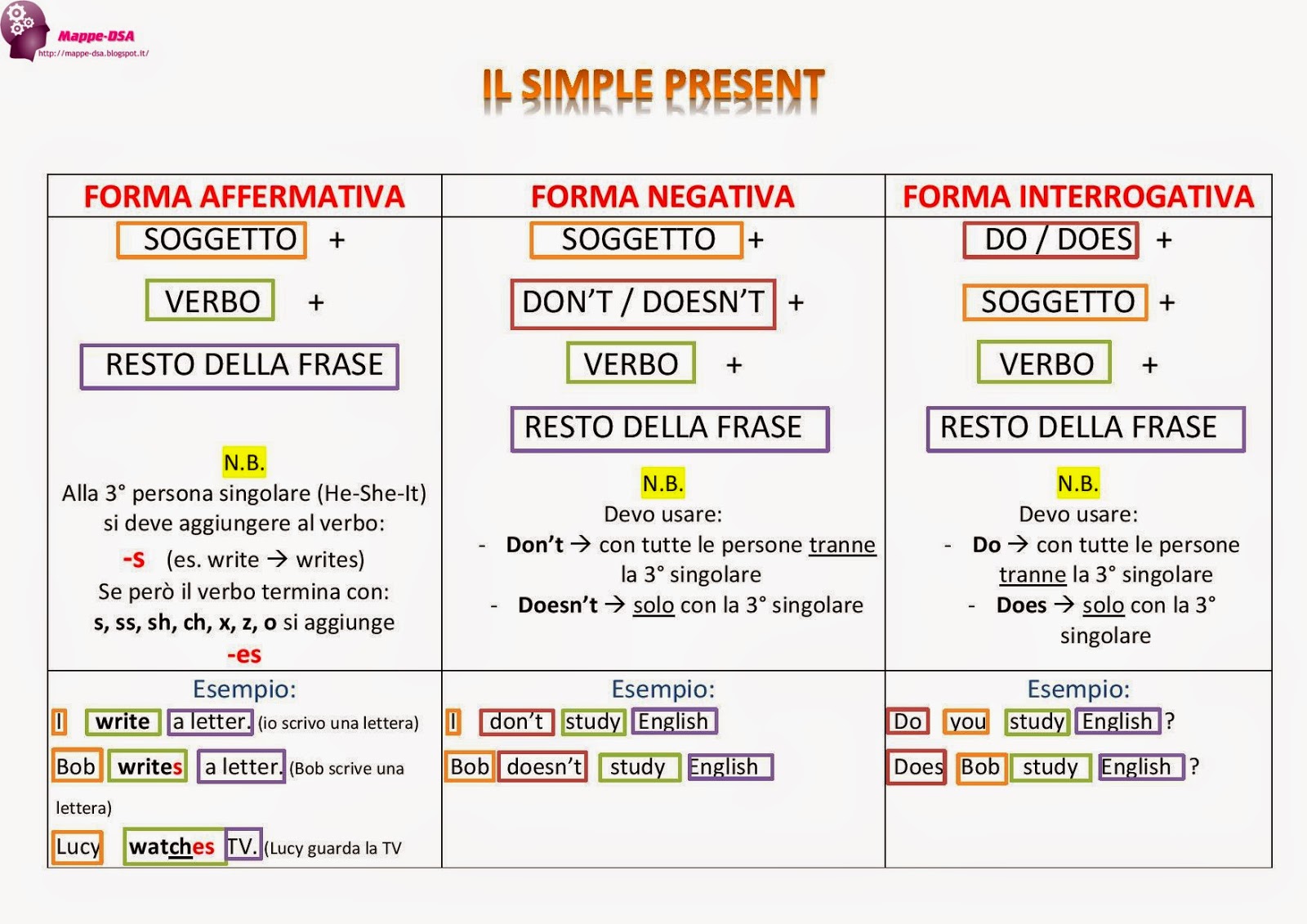
Schemi E Mappe Di Inglese To Be (simple Present)
Choose the correct answers to complete the sentences. Question: 1 / 3. A: Good news! Alex the computer. B: Great! I enough of using my phone to send emails. Free exercises to practise Present perfect simple and present perfect continuous | Oxford Learner's Dictionaries.

Present continuous Inglese, Mappe, Grammatica inglese
1. L'azione si è svolta nel passato, ma il tempo non è espresso (non dico quando). Per esempio: Ho visto quel film. / I have seen that film. L'azione di vedere il film è passata, ma non dico quando.

Present Simple Mappa Concettuale
Theyll get back home on Saturday. Have you ever to Australia No, but Id love to go. Why has dad He was very tired. to bed so early have looked for you everywhere Where have you. 5 Riscrivi le parole nell'ordine giusto. parents your yet you have called. has gone Stella out just. home yet Peter come back has.

Talk2Me English The Present Perfect Tense Simplified
PRESENT PERFECT. Siusaper esprimereleffetto presente di una azione passata parlareingeneralediazioni passate senza indicazioni di tempo. u n azione iniziata nel passato che continua tutt'ora . AFFERMATIVA. NEGATIVA. INTERROGATIVA. BREVI. TO. WORK.

corso di inglese present perfect continuous YouTube
Session 1 3 Activities Things to do before you're 30 08 Dec 2014. If you want to tell someone about things you have - or haven't - done, you'll need the present perfect tense.
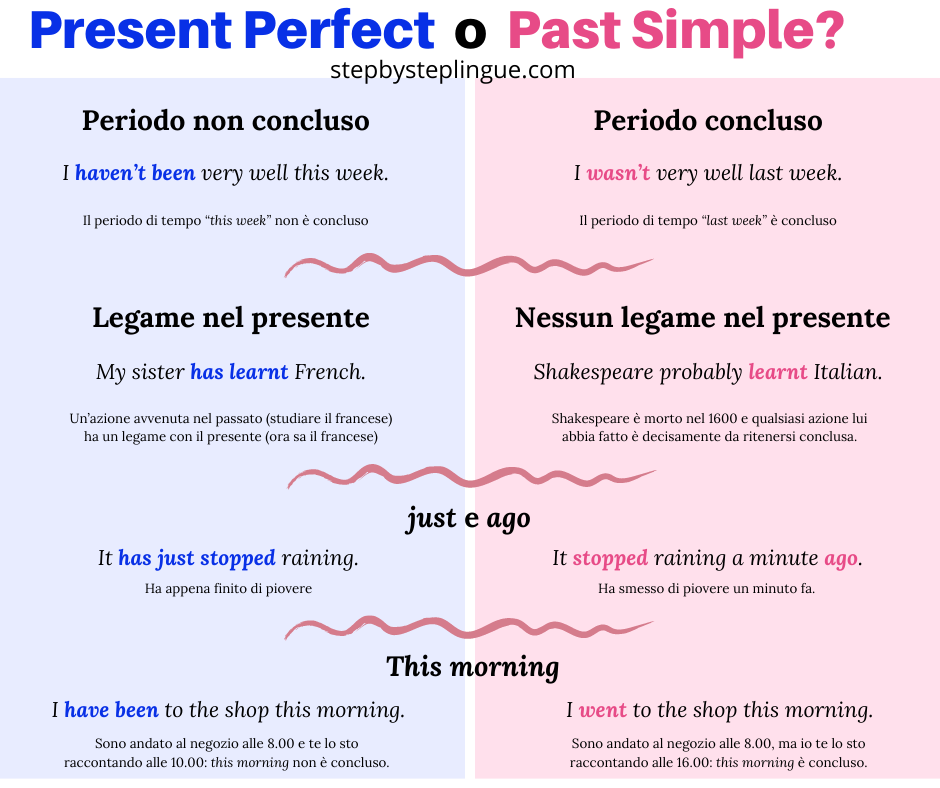
Schemi Present Perfect
A diagram to visualize the Present Perfect. 1. We use the Present Perfect for actions in the past which have a connection to the present. The time when these actions happened is not important. 2. We use the Present Perfect for recently completed actions. 3. We use the Present Perfect for actions beginning in the past and still continuing.

Structure of Present Perfect Tense English Study Page
The present perfect is a relational tense. We use it to consider one state, event or action in relation to another. Fundamentally, the tense is a present tense, not a past tense, because it refers to the present in relation to the past. Another way of putting that is that it refers to the past within the present.
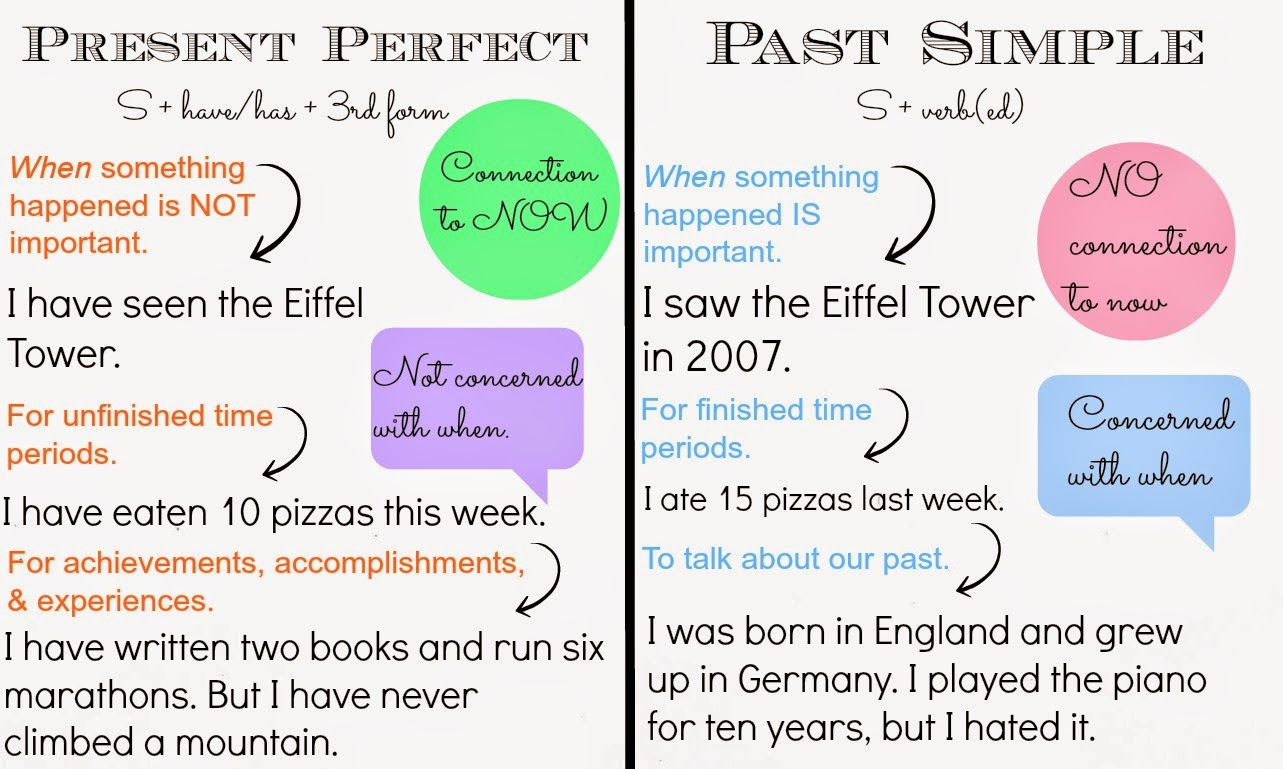
Present Perfect Simple
It's typically used to indicate experience up to the present, recent actions, or a change that occurred over a period of time. The present perfect is formed using the auxiliary verb "have" and the past participle of the main verb (e.g., "I have eaten"). However, the third person singular (e.g., "he," "she," and "it") uses.

Paradiso delle mappe Inglese Inglese, Grammatica inglese, Tempi
Present perfect simple vs Past simple Inserisci le espressioni di tempo nella colonna 1 corretta della tabella. fortwohours atnineoclock sincehalfpastfive threedaysago fortwodays lastChristmas sincemybirthday lastyear foralongtime fi veminutesago in2007 since1987 yesterday lastnight forages sinceFebruary lastsummer forfi vedays